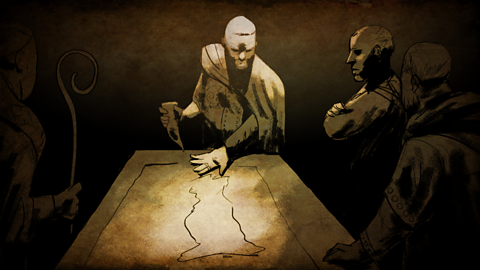The Norman conquest of 1066 transformed England. Most of the land previously owned by Anglo-Saxon nobles was now held by Normans. Defensive castles and huge stone cathedrals began to dominate the landscape and served as a constant reminder of how wealthy and powerful their new rulers were. But this was a volatile situation and Anglo-Saxon resistance kept bubbling up.
After Harold's death at the Battle of Hastings, brothers Edwin and Morcar were among the Anglo-Saxon nobles who had chosen Edgar the Aethling to inherit the throne. They later submitted to William due to a lack of strong opposition. They were rewarded with land in the north. And when the new king had to return to Normandy where he was still Duke, he took the brothers as hostages to ensure they didn't start a revolt whilst his back was turned.
In 1068 they were allowed to return to their earldoms, but they took no time in organising a rebellion in Mercia. The 12th-century historian Orderic Vitalis reported this was a response to the Normans' cruelty. William, dealing with a series of revolts at this point, made his way north, building a number of defensive castles. The brothers realised they had no choice and once again submitted to William. They were pardoned but taken as hostages again, though still managed to escape.
In 1068, William replaced Morcar as Earl of Northumbria with a Norman without consulting the locals. The people were outraged. Edwin and Morcar helped the rebellion, which resulted in the massacre of the new earl and 900 of his men. William's army responded by plundering and destroying every village from the Humber to the Tees. They burnt farmsteads to the ground, slaughtered the farm animals and destroyed the crops. They even ploughed salt into the earth to prevent new crops from growing. Those inhabitants who had not been murdered were left to starve. Orderic Vitalis reported that more than 100,000 people died, and those who survived apparently resorted to eating cats, dogs and even each other. Refugees flowed south, many dying en route. It became known as the "harrying of the north". Orderic Vitalis thought that "nowhere else had William shown such cruelty". God would punish him. But even this atrocity didn't put a stop to resistance.
So the story goes, in 1070, Hereward, an exiled English rebel, secretly returned to England. He found his family's lands taken over by Normans and his murdered brother's head hanging above the door. In his fury, Hereward crept up on a group of Normans, drinking, revelling and mocking the English. He slaughtered them all, before replacing their heads instead of his brother's above the door. Then, together with the Danes, he laid siege to the monastery on the Isle of Ely in the Fens of East Anglia. The rebels were confident. They had good food supplies, local allies and were joined by Morcar, former Earl of Northumbria. William, determined to crush the siege, built a mile-long wooden ramp to the island. But when the Normans stampeded across, the ramp collapsed and they fell into the muddy water below. In their heavy armour, they didn't stand a chance.
Next, William, according to the 12th-century Gesta Herewardi, enlisted the help of an old witch who he housed in a wooden tower to terrorise the rebels. She cursed the English and threatened their defeat and destruction before flashing her bare buttocks at them! Hereward responded by setting the fens and the tower on fire. But the Norman army bribed some local monks who led them via a secret route to the island and Hereward was finally defeated. Edwin was killed and Morcar once again imprisoned. The English revolts against William were over.
In 1087, William died from an injury when his horse stumbled while fighting the French. The barons at his deathbed raced off to protect their estates before looters arrived, stripping him of his possessions. William I was one of the most successful European kings of his time. Invasions from Scandinavia were finally over. Kings and Queens of England continued to rule over areas of France for centuries to come and the political and cultural landscape of England had been transformed forever.
Video summary
An exploration of Anglo-Saxon resistance to Norman rule after William's coronation on Christmas Day in 1066.
Edwin and Morcar were serial offenders, yet each time seem to receive a Royal pardon.
William was particularly severe in putting down a rebellion in the North of England.
Perhaps the most determined rebellion was led by Hereward the Wake, supported by some Danish invaders, in the Fens of East Anglia in 1070 -1071 but even that, too, is defeated by William, with the help of a wooden tower, a witch and some monks.
Teacher Notes
Key Stage 3:
Students could research and then discuss why were there so many rebellions against William? Which was the most serious from William's point of view and how successfully did William deal with rebellions?
Key Stage 4:
Hold a class debate with the title, 'How successful a king was William?'
- What did people at the time expect of a king?
- Did William deliver?
- Did everyone in England accept William as their king?
- Does everyone in your class agree about William?
This clip will be relevant for teaching History in secondary schools in the UK. This topic appears in OCR, Edexcel, AQA, WJEC KS4/GCSE in England and Wales, CCEA GCSE in Northern Ireland and SQA National 4/5 in Scotland.
1066: The claimants to the throne (1/6) video
Edward the Confessor died in January 1066 without a son or heir. Who would be chosen to be king?
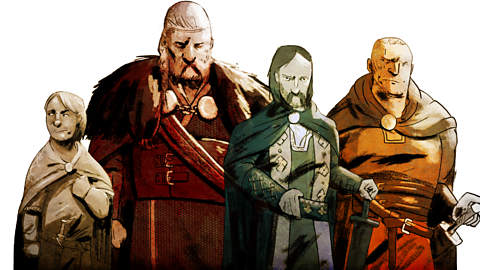
1066: The Battle of Fulford (2/6) video
In the first major battle of 1066, the Viking king of Norway, and Harold Godwinson's own brother Tostig, invade the north of England.
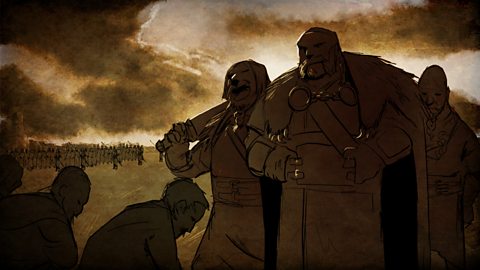
1066: The Battle of Stamford Bridge (3/6) video
The Battle of Stamford Bridge was the second major battle in the fight for the throne in 1066 and two of the four contenders were killed.
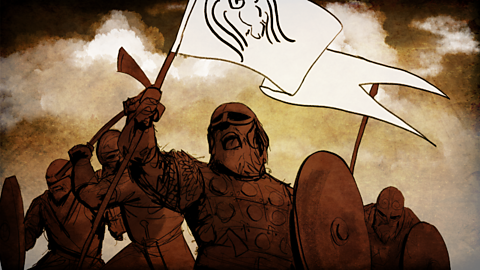
1066: The Battle of Hastings (4/6) video
William of Normandy arrives in Sussex for the decisive battle of the Norman Conquest.
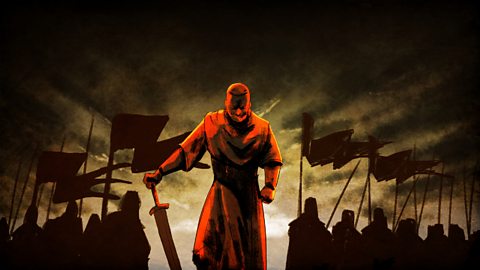
1066: King William and Domesday Book (5/6) video
How William the Conqueror secured control over England.
